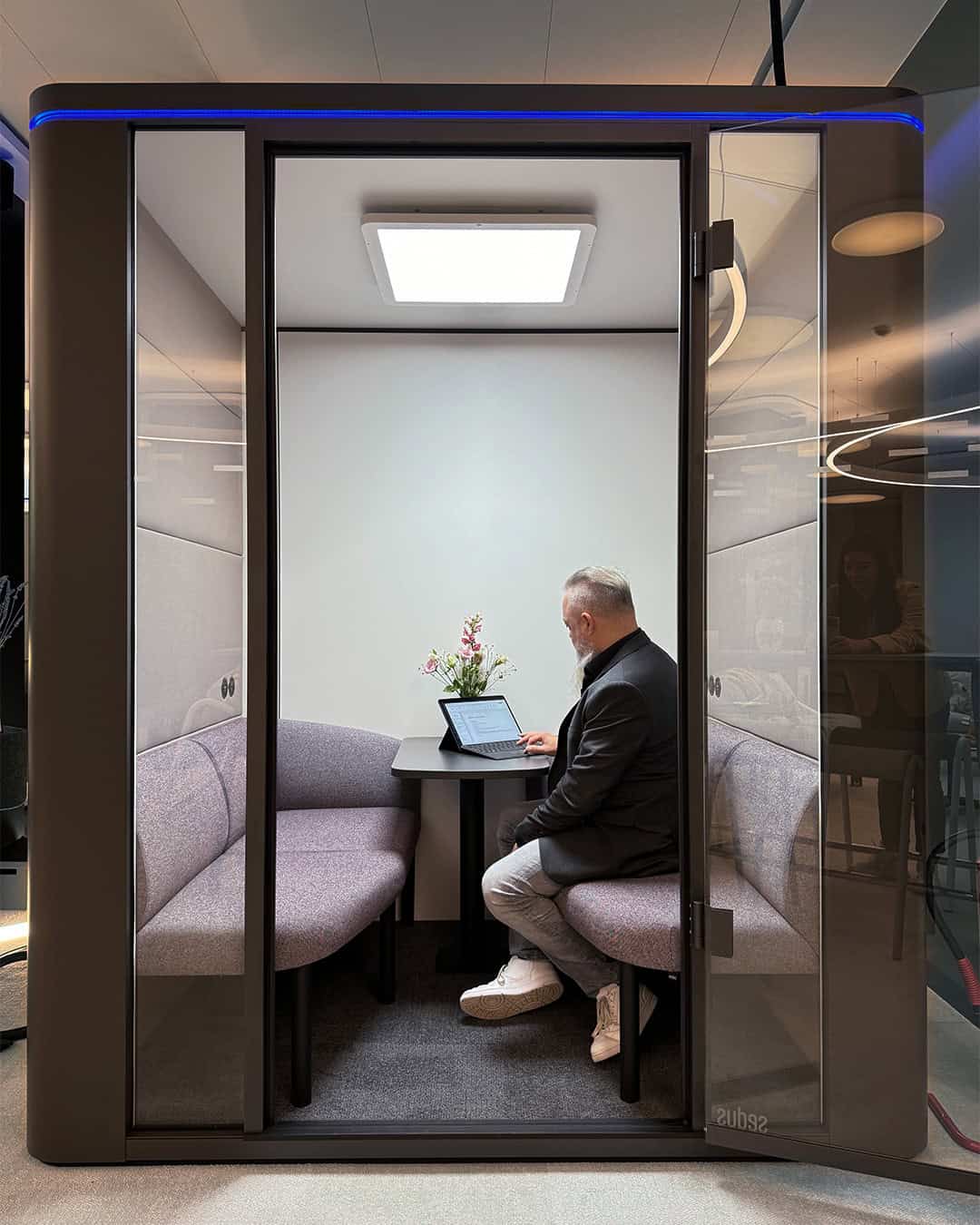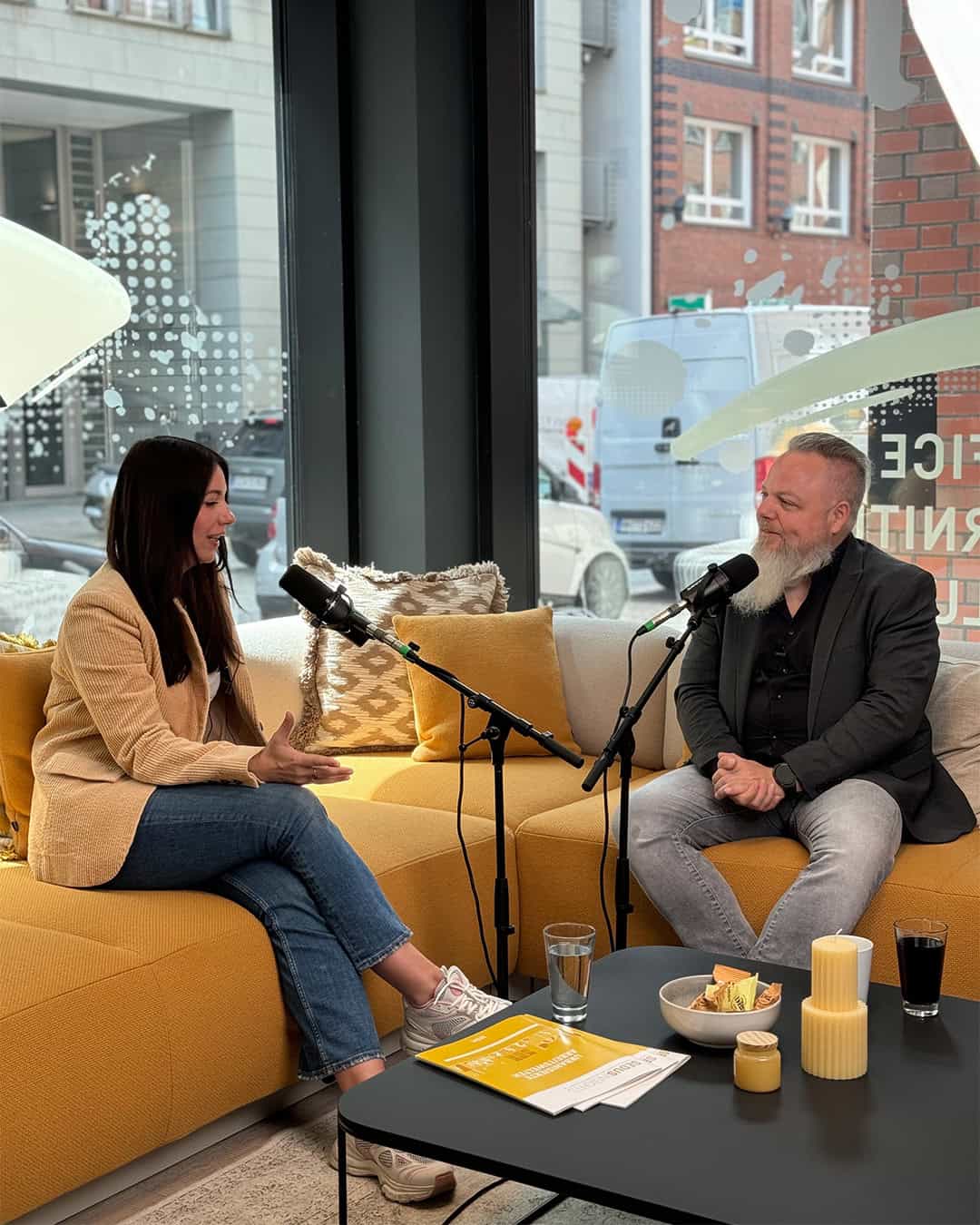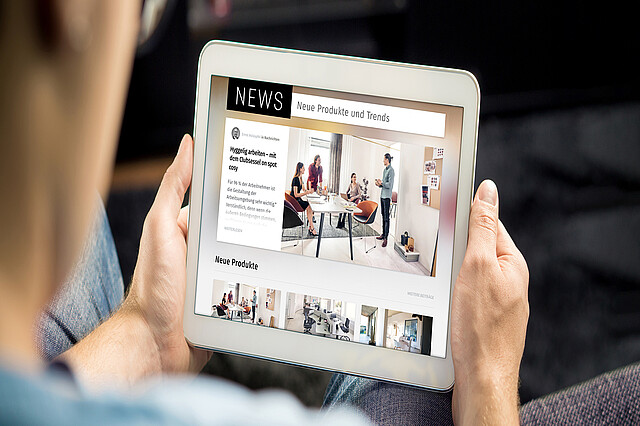With almost 30 years of experience in Microsoft 365, he runs ArtReich GmbH and shares his knowledge in courses, training sessions and via social media. In this interview, Sandmann-Reetz explains how he communicates complex content in an understandable way, what role digital tools play in hybrid working models and what developments he expects for the future.

We met Florian Sandmann-Reetz at the Sedus showroom in Hamburg to talk to him about his job, hybrid work and the future of work.
Give us a brief insight into your job: who are you and what do you do?
I'm Florian Sandmann-Reetz and I've been a Microsoft 365 trainer and expert for almost 30 years. Together with my team at ArtReich GmbH, we bring this knowledge to the world in our courses, training programmes and consulting projects. Some of you may also know me from social media, where I like to pass on my knowledge in the form of short tips and tricks.
How do you manage to explain Outlook, Excel or Microsoft Teams in such an interesting way so that everyone understands it?
This is based on a method developed from over 27 years of experience as a trainer with a mixture of didactics and rhetoric, enriched with a lot of enthusiasm for our topics and knowledge transfer - always with a wink.
I pass this method on to my trainer colleagues at ArtReich Trainer, but otherwise it is a well-kept trade secret.
What role do Microsoft 365 and other digital tools play in the implementation of Hybrid Work?
Digital tools are the prerequisite and the linchpin for hybrid and mobile working.
To be able to work from anywhere in the world as if you were in the office, cloud technologies are absolutely fundamental.
Which specific Microsoft Teams features would you recommend to companies to maximise productivity in a hybrid working environment?
Firstly, of course, I would recommend Teams in Teams - these are exactly what you need for successful collaboration. On the one hand, they can be used for communication in the form of chats and channels. You also have shared resources in the form of libraries and files where you can work simultaneously. There is also joint task planning in Planner and, as a fourth pillar, information management in OneNote.
All of these tools can be expanded as required to meet the specific requirements of a company.
What tips & tricks can you give for the effective use of Outlook in the home office?
From the many tips and tricks for using Outlook, which I pass on in all forms and on many channels, here are the two most important ones:
Firstly, the inbox-zero strategy with an inbox that is always as empty as possible. And, the consistent use of quick steps and rules.
How do you organise your training courses to ensure maximum interactivity and learning success, even in a hybrid or remote setting?
As around 85% of our training courses now take place remotely, we have designed the entire seminar concepts accordingly and adapted the process, didactic structure, etc. to the digital setting. After all, a training course that works in person cannot simply be held digitally in the same way.
We therefore have two complete training concepts, one for face-to-face training and one for online training, both of which are optimised for the respective setting.
How do you see the future of work in the next five to ten years? Will hybrid working models continue to play an important role?
In my view, these models will play an increasingly important role and will become more common rather than less, as employees will demand hybrid models more vehemently.
For example, the question of balancing family and career is a very big issue for many people, and hybrid work will at least make this easier than with traditional models.
People who have other interests in addition to their main job (that requires a lot of their time), such as voluntary work, will also be pleased with more flexible working time models.
And anyone who would like to work remotely will also choose an employer that offers the opportunity to do so.
What developments in digital tools and software do you expect in the near future that could further facilitate or change work?
The use of AI will have a significant impact on our work. I think the majority of our current office activities will be taken over by AI in combination with automated processes in the future.
This will free up a lot of resources and energy for activities that we can't even imagine at the moment.
I estimate that in the foreseeable future, we will only be carrying out around 20% of the activities we are used to. The other 80% will be things that we can't even imagine right now.
What personal habits or techniques have helped you to work effectively with Office 365?
To practise effectiveness with Office 365, I set up all the Microsoft 365 tools, filled my calendar with training courses, projects and tasks and then retreated to a workstation for a fortnight. During this time, I had no alternative to tools outside the 365 world and therefore had to work entirely with the possibilities offered by Microsoft. I learnt a lot in the process, which I also pass on in my training courses.
This approach has worked wonderfully and has now been perfected so that I can work around the world as if I were at home in my own office.
The magic trick is to really get fully involved in the great world of Microsoft and use all the tools that enable flexible and location-independent working.
The interview with Florian Sandmann-Reetz impressively shows how important the right digital tools and effective knowledge transfer are in the modern working world. With almost three decades of experience as a trainer for Microsoft 365, he shares valuable insights into the use and future of hybrid working models. Sandmann-Reetz emphasises the importance of cloud technologies and AI for the future of work and gives practical tips on how companies and individuals can increase their productivity in a digital environment. His method of communicating complex content in an understandable and entertaining way has proven itself over the years and is helping to make Microsoft 365 accessible to everyone.



